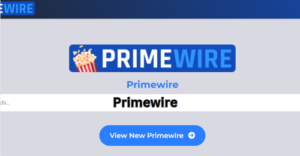Fake IDs- Understanding, Consequences, and Alternatives

Introduction
In an age where identity verification has become crucial, fake IDs have emerged as a significant concern. Forged identification documents that mimic official IDs such as driver’s licenses or student cards can lead to serious legal consequences and ethical dilemmas. This guide delves into the world of fake IDs, exploring their nature, implications, legal consequences, and providing information on how to safeguard oneself from misuse.
What Are Fake IDs?
Definition and Overview
- Driver’s Licenses: Typically used to prove age and identity.
- Student IDs: Used for identification in educational settings and sometimes for discounts.
- Passports: Essential for international travel and identification.
How Fake IDs Are Created
- Acquisition of Templates: Fraudsters often use templates or digital tools to design fake IDs.
- Printing Techniques: High-quality printers and materials are used to mimic the look and feel of real IDs.
- Personalization: Details such as name, date of birth, and photograph are customized to match the intended user.
Types of Fake IDs
- High-Quality Fakes: Designed to closely resemble real IDs, making them harder to detect.
- Low-Quality Fakes: Often easily identifiable due to poor printing and material quality.
Legal Consequences of Using Fake IDs
Criminal Charges and Penalties
- Fraud Charges: Misrepresenting oneself using a fake ID can lead to charges of fraud.
- Fines and Penalties: Offenders may face hefty fines depending on the severity of the crime.
- Imprisonment: In some cases, particularly with repeated offenses or severe fraud, imprisonment may be a result.
Impact on Personal Record
- Criminal Record: A conviction related to fake IDs can impact one’s criminal record, affecting future opportunities.
- Employment and Education: A criminal record can hinder employment prospects and educational opportunities.
Case Studies and Examples
- Notable Legal Cases: Examining specific cases where individuals faced severe consequences for using fake IDs.
- Statistics: Overview of data on the prevalence of fake ID usage and its legal outcomes.
Ethical and Social Implications
Ethical Concerns
- Trust and Integrity: Fake IDs undermine trust and integrity, impacting personal and professional relationships.
- Security Risks: Fake IDs can be used for illegal activities, leading to broader security concerns.
Social Impact
- Impact on Youth: Young people may be more likely to use fake IDs for underage drinking or other activities, influencing their behavior and perceptions.
- Public Safety: The use of fake IDs can have implications for public safety, especially when used to commit further crimes.
Alternatives to Fake IDs
- Legal Pathways: Exploring legitimate ways to obtain identification or access services.
- Educational Programs: Programs aimed at educating youth about the risks and consequences of using fake IDs.
Safeguarding Against Fake ID Usage
Detection and Prevention
- Security Features: Identifying common security features in IDs that can help in detecting fakes.
- Training for Identification: Training for businesses and institutions on how to recognize fake IDs.
Reporting and Legal Resources
- Reporting Fake IDs: Steps to report suspected fake IDs to authorities.
- Legal Assistance: Resources for individuals facing legal issues related to fake IDs.
Personal Safety Measures
- Privacy Protection: Measures to protect personal information and prevent misuse.
- Digital Security: Safeguarding digital identities to prevent identity theft and fraud.
What alternatives are available for underage individuals needing ID?
School Identification Cards: Many schools issue student IDs that can be used for various purposes, including age verification and accessing student services.
State-Issued Learner’s Permits: In many places, a learner’s permit can serve as a legal form of ID, even if it is not a full driver’s license.
Youth Membership Cards: Organizations such as youth clubs or sports leagues often provide membership cards that include age and identification information.
Passport: If underage individuals are traveling, a passport is an official form of ID that is accepted globally.
Temporary State ID Cards: Some states offer temporary or provisional ID cards for individuals who are not old enough to apply for a full driver’s license.
Parental Consent Forms: For certain situations, a notarized consent form from a parent or guardian can serve as proof of age and identity.
Health Insurance Cards: In some cases, health insurance cards can be used to verify identity, particularly in medical or emergency situations.
School Bus Passes: In some regions, school bus passes include identification information that can be used for age verification.
Library Cards: Public libraries often issue cards with age-related information that may be useful in specific contexts.
Student Discounts Cards: Cards issued by educational institutions or discount programs that include the student’s date of birth and photo.
How can businesses train employees to spot fake IDs?
Understand Legal Requirements
Know the Regulations
- Familiarize with Local Laws: Employees should be aware of local and national regulations regarding identification and age verification.
- Compliance Training: Regular updates on legal requirements ensure that staff are up-to-date.
2. Learn Security Features of Genuine IDs
Recognize Authenticity
- Study Security Elements: Teach employees to identify common security features such as holograms, microprinting, UV elements, and color-shifting inks.
- Use Reference Guides: Provide visual guides or samples of real IDs for comparison.
Practice with Real and Fake IDs
- Hands-On Training: Use a combination of real and fake IDs in training sessions to help employees learn to distinguish between them.
- Interactive Tools: Utilize online tools or apps that simulate ID verification to practice spotting fake IDs.
3. Develop Observation Skills
Look for Common Signs of Forgery
- Check for Inconsistencies: Train employees to look for discrepancies in fonts, colors, and textures.
- Examine Photo Quality: Highlight that fake IDs often have blurry or poorly aligned photos.
Verify Information Consistency
- Cross-Check Details: Ensure that information on the ID matches the information provided by the individual (e.g., name, date of birth).
4. Implement Verification Procedures
Use Technology and Tools
- ID Scanners: Introduce ID scanning technology that can help detect counterfeit documents.
- Database Checks: Implement systems that can cross-reference IDs with government databases.
Follow Verification Protocols
- Standard Operating Procedures (SOPs): Establish clear SOPs for verifying IDs, including steps for escalating suspicious cases.
- Employee Scripts: Provide scripts for staff to follow when they suspect an ID might be fake.
5. Conduct Regular Training and Refreshers
Ongoing Education
- Scheduled Training: Regularly schedule training sessions to keep employees informed about new fake ID trends and security measures.
- Refresher Courses: Provide periodic refreshers to reinforce knowledge and skills.
Assess Knowledge and Skills
- Quizzes and Tests: Use quizzes and practical tests to evaluate employees’ understanding and ability to spot fake IDs.
- Role-Playing: Conduct role-playing scenarios to simulate real-life situations involving ID verification.
6. Encourage Reporting and Feedback
Create a Reporting System
- Easy Reporting: Set up a straightforward process for employees to report suspicious IDs or incidents.
- Anonymous Reporting: Allow for anonymous reporting to encourage employees to share concerns without fear.
Provide Feedback and Support
- Review and Discuss: Regularly review reported cases and discuss them in team meetings to enhance learning.
- Supportive Environment: Foster a supportive environment where employees feel comfortable seeking help or clarification.
7. Stay Informed About New Trends
Keep Up with Trends
- Industry Updates: Subscribe to industry newsletters and updates to stay informed about emerging trends in fake ID technology.
- Networking: Engage with other businesses and professionals to share insights and best practices.
Conclusion
Fake IDs pose significant legal, ethical, and social challenges. Understanding their implications and the consequences of using them is crucial for making informed decisions. By being aware of the risks and adhering to legal and ethical standards, individuals can protect themselves from the negative impacts associated with fake IDs.
FAQS:
1. What is a fake ID?
A fake ID is a counterfeit document designed to imitate an official identification card, such as a driver’s license or passport, with the intention of deceiving authorities or institutions.
2. What are the legal consequences of using a fake ID?
Using a fake ID can lead to criminal charges, fines, and imprisonment. The severity of the consequences depends on the jurisdiction and the nature of the offense.
3. How can fake IDs be detected?
Fake IDs can be detected through various methods including examining security features, using UV light, and comparing with known genuine IDs.
4. What are the risks associated with using fake IDs?
The risks include legal repercussions, damage to personal reputation, and potential involvement in further criminal activities.
5. Are there any legitimate ways to access services if you are underage?
Yes, there are legal pathways such as obtaining a learner’s permit or using age-appropriate services designed for younger individuals.
6. How can I protect myself from identity theft and fraud?
Protect yourself by safeguarding personal information, using secure passwords, and monitoring financial statements regularly.
7. Can I report someone using a fake ID?
Yes, you can report suspected fake ID usage to local authorities or relevant institutions for further investigation.
8. What should I do if I accidentally receive a fake ID?
If you receive a fake ID unintentionally, report it to the authorities and follow any legal or procedural guidelines provided.
9. What are some common features of real IDs that can help in identifying fakes?
Common features include holograms, microtext, and special printing techniques that are difficult to replicate.
10. Where can I find resources or training on detecting fake IDs?
Resources and training can often be found through law enforcement agencies, industry organizations, and specialized training programs.





